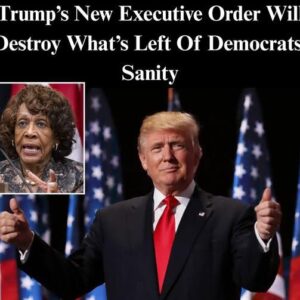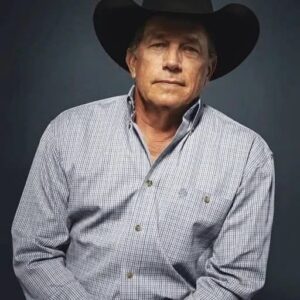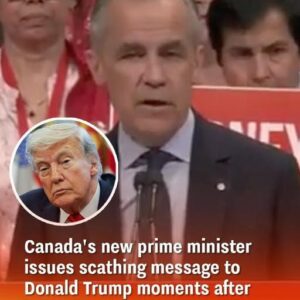Donald Trump’s “51st State” Proposal Sparks Debate as Canadians Head to the Polls
As Canadians filed into polling stations on April 28 to cast their ballots in what many observers have characterized as one of the most fiercely contested federal elections in recent memory, an unexpected voice entered the fray: former U.S. President Donald J. Trump. Through his Truth Social platform, Mr. Trump issued an impassioned—and unprecedented—appeal to Canadian voters: embrace the notion of Canada becoming the United States’ “51st state” and thereby secure sweeping economic benefits and borderless cooperation.
While his overture was couched as an expression of goodwill toward Canada, it immediately ignited vigorous debate across the political spectrum, with both major party leaders—and a multitude of political commentators—voicing strong reactions. Below, we offer a thorough, professional analysis of the background, key players, the substance of Mr. Trump’s proposal, and its potential ramifications for Canada–U.S. relations.
1. The 2025 Canadian Federal Election: A Tense Showdown
Date and Stakes. On April 28, 2025, Canadians went to the polls to determine the leadership of the federal government. Voters faced a choice between the incumbent Liberal Party, led by newly sworn-in Prime Minister Mark Carney, and the Conservative Party under Pierre Poilievre. With neither party enjoying an insurmountable advantage in the polls, the outcome was widely regarded as too close to call—an electoral climate ripe for outside interference or influence.
Incumbent Government. Mark Carney, who assumed the office of Prime Minister a mere six weeks prior, brought with him a reputation forged at the helm of the Bank of Canada and later the Bank of England. His economic stewardship during global financial turbulence had earned him international respect; domestically, however, he faced the challenge of translating technocratic expertise into populist appeal.
Opposition Contender. Pierre Poilievre, a veteran parliamentarian and vocal critic of high taxation and regulatory overreach, campaigned on promises to reduce the tax burden, bolster energy exports, and assert Canadian sovereignty on the world stage. His Conservatives had opened the campaign with a commanding lead of as much as twenty-five percentage points—only to see that margin narrow significantly as the race progressed.
2. Mark Carney: From Central Banker to Prime Minister
Professional Background. Mark Carney’s rise to political office was as unconventional as it was meteoric. Prior to entering public service in Canada, Carney earned acclaim for his leadership at the Bank of Canada (2008–2013) and the Bank of England (2013–2020), where he navigated economies through the aftermath of the global financial crisis. His tenure was marked by a commitment to transparent monetary policy and a readiness to deploy unconventional tools—qualities that endeared him to global markets.
Domestic Agenda. As Prime Minister, Carney positioned himself as a unifier capable of bridging the traditional divides between fiscal prudence and social investment. His platform prioritized strategic infrastructure spending, investment in clean technology, and incremental tax increases on the highest income brackets—measures designed to fund healthcare and climate initiatives without unduly burdening the middle class.
Leadership Style. Known for his cerebral approach and consensus-building skills, Carney’s challenge was connecting with voters on a visceral level. He strove to convey economic data in accessible language, framing numbers in human terms—jobs protected, communities revitalized, and future stability secured.
3. Pierre Poilievre: Champion of Conservatism and Economic Populism
Political Career. Pierre Poilievre’s tenure in the House of Commons began in 2004, and over two decades he carved out a reputation as a fierce debater and staunch defender of small-government principles. As leader of the Conservative Party, he adopted a populist inflection, promising to “return power to Canadians” by cutting taxes, deregulating industries, and standing firm against what he described as “overreaching bureaucrats.”
Policy Proposals. Poilievre’s platform centered on halving personal income taxes for the middle class, eliminating capital-gains taxes for small-business owners, and aggressively promoting Canada’s natural resources sector—particularly oil, gas, and potash exports. He also pledged to reduce trade barriers within North America, arguing that closer economic integration with the United States would spur growth and job creation.
Electoral Appeal. Poilievre appealed to Canadians frustrated by housing affordability, elevated living costs, and what they perceived as ineffective governance. His rallies drew energized crowds; his combative style resonated with voters who felt unheard by more technocratic leaders.
4. Polling Dynamics: A Swinging Pendulum
At the outset of the campaign, the Conservative Party enjoyed a substantial lead—up to twenty-five points—over the Liberals. Observers attributed this advantage to widespread dissatisfaction with the pace of economic recovery and concerns over government spending. However, as the campaign matured, Carney mounted a counteroffensive.
Liberal Resurgence. Through targeted outreach and disciplined messaging, the Liberals clawed back ground. Carney’s economic credentials began to shine, especially among suburban voters and young professionals wary of Poilievre’s more radical tax overhaul. By mid-April, polling aggregates showed the two parties neck and neck, setting the stage for a nail-biting final weekend.
Role of External Factors. Trade negotiations, climate policy debates, and global geopolitical shifts also influenced voter sentiment. In particular, Canadian–U.S. tariff disputes—some lingering from the previous U.S. administration and others newly instated—became hot topics, as exporters worried about market access and consumers fretted over rising costs.




